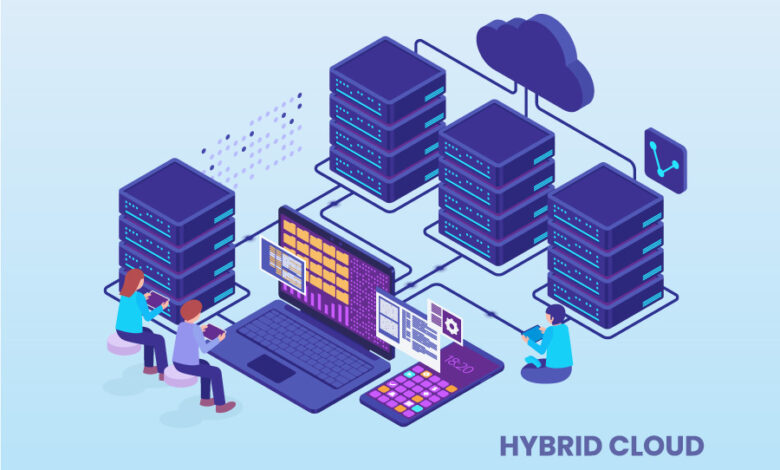What Is Hybrid Cloud?

What Is Hybrid Cloud Computing?
Hybrid Cloud computing involves both on-premise private Cloud architecture and third-party hosted off-premise public Cloud services. Both these architectures orchestrate to create a Cloud computing environment with unique advantages but certain pitfalls as well.
What is Hybrid Cloud?
A Hybrid Cloud merges user-owner Cloud infrastructure and services with user-paid (not owned) services.
As an example, a user with app development needs can create the app on the private cloud while using computing power from the public Cloud services. He/she can then deploy the app on the public space to run debugging while using a secure database stored in the private Cloud.
There is no pre-specified metrics on how workload, data, computing power is shared between the private and public Cloud. Note that a Hybrid is a single Cloud environment where the private architecture is built on top of the public Cloud.
This is not an easy task and does require specific expertise and a dedicated IT team to architect the private Cloud framework.
Advantages of a Hybrid Cloud
Easy Scalability
Private architecture is scalable but at a cost. It is also limited in comparison to a public Cloud service when considering computing power. A Hybrid architecture allows better scalability by leveraging a public Cloud to run non-basic tasks and frees the private Cloud resources.
Data Security
Public Cloud architecture is secure from unwanted external access as a service deliverable from the 3rd party providers. But a private Cloud offers a firewall as a guarantee of security.
On-Premise Load Balancing
A Hybrid architecture has more computing resources available at its disposal than a completely private alternative. This allows for easier load balancing in high workload situations.
Privacy of Sensitive information
The hybrid cloud architecture allows the user, or rather, the organization to store its sensitive data in its private Cloud while using public Cloud computing resources simultaneously. This is one of the reasons why medium to large organizations are using on-premise hybrid Cloud systems.
 How to Create a Hybrid Cloud Environment?
How to Create a Hybrid Cloud Environment?
Creating a Hybrid Cloud architecture primarily involves putting a compatible private Cloud structure in place.
Fundamental components need to installed and implemented on-premise, including server, LAN, load balancers, and storage. After server virtualization, the private layer is installed to create the private Cloud using middleware, i.e. a hypervisor.
What makes successful hybrid architecture is the seamless interoperability and resource sharing between the private and public Clouds. The key lies in installing a hypervisor and private Cloud software layers that can integrate with the public Cloud API and services.
Simply, to create a Hybrid cloud using AWS as the public service, an organization should develop a private Cloud structure that is in sync with the AWS API.
Hybrid Cloud computing is an innovation in the process. With time and integrations, it is expected that large public Cloud providers will develop specific private software packages that mimic their public APIs for easier integration. Yet, despite the challenges, going hybrid is the best way for a business to scale its operations while maintaining its private network.
